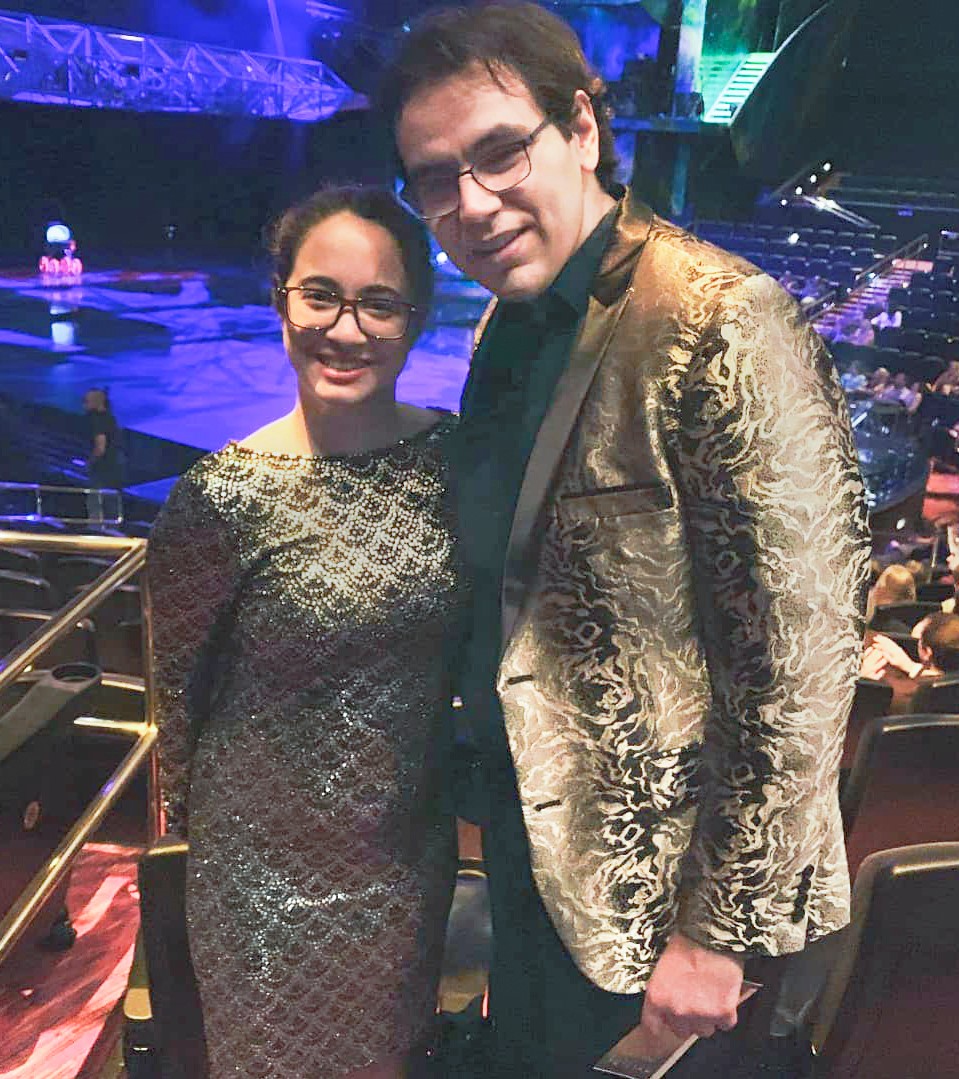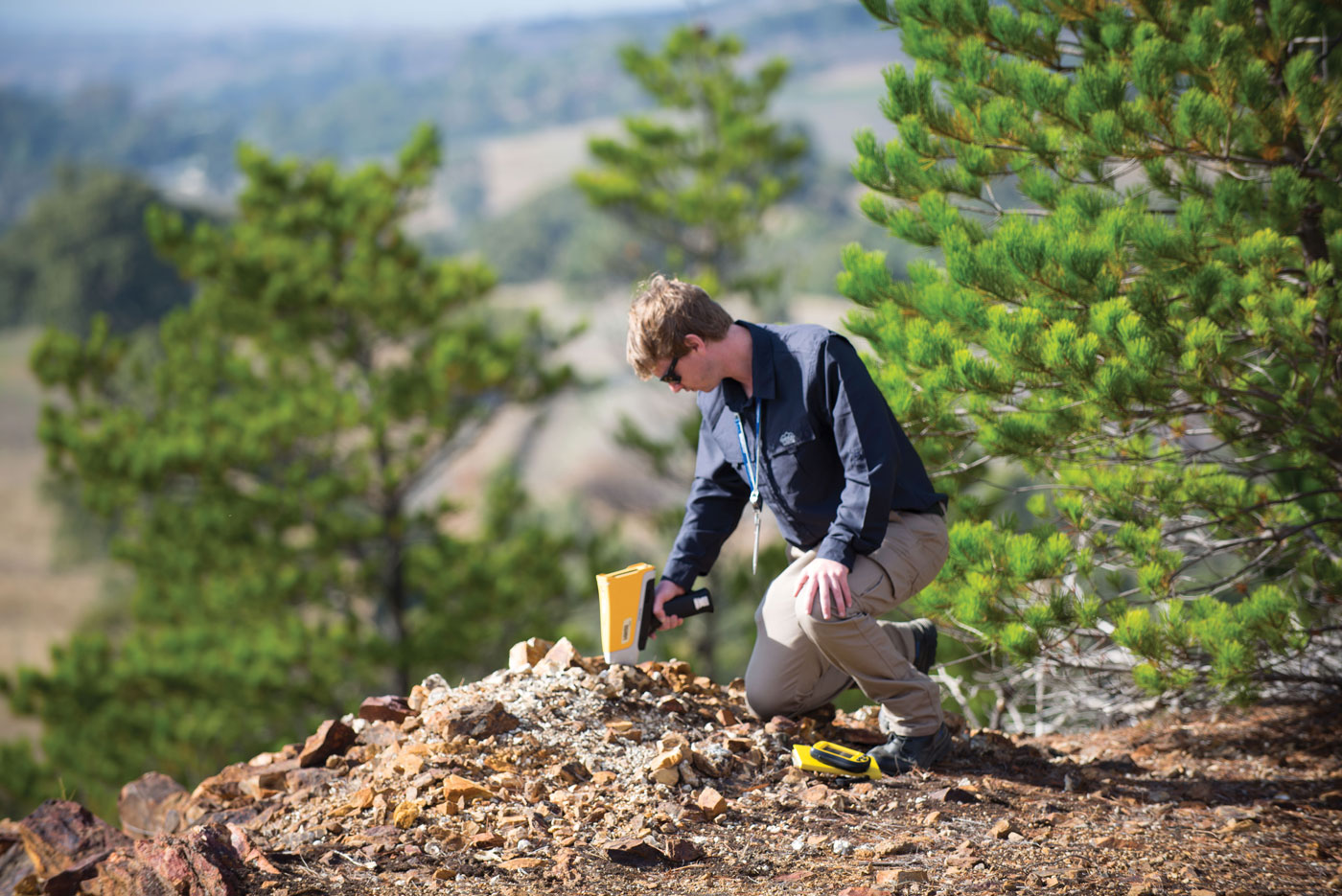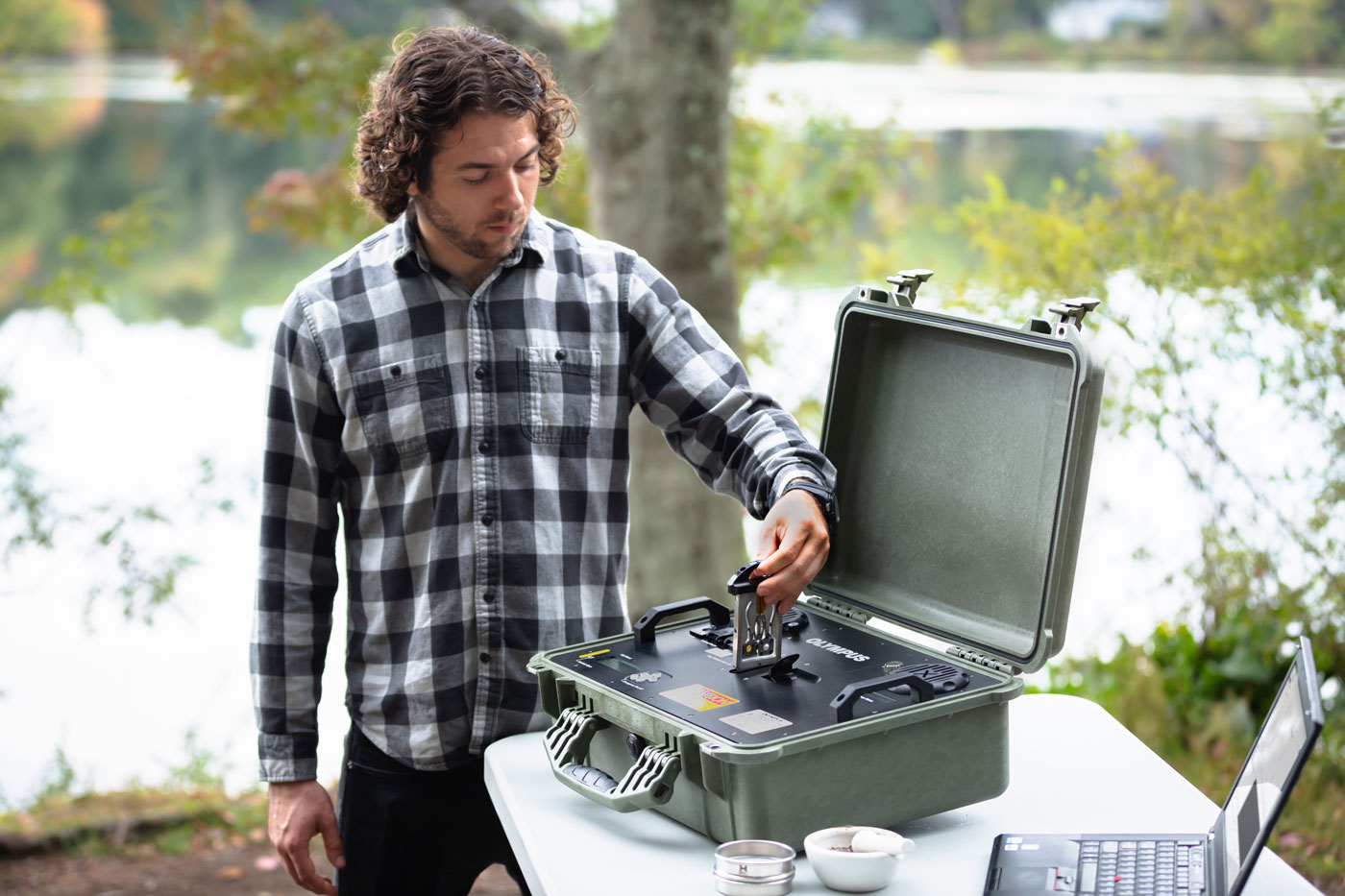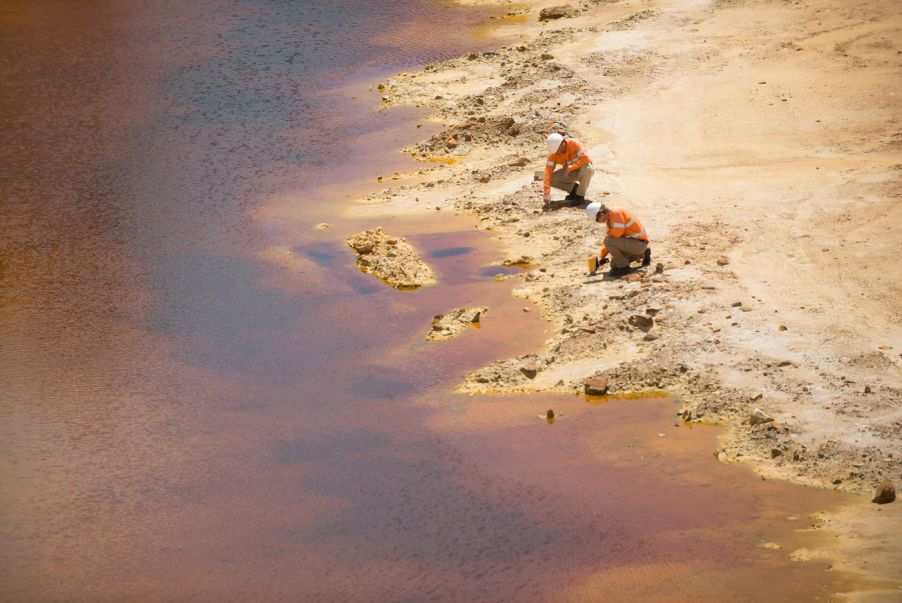In this spotlight series, we’re introducing members of our application scientist team to put faces and names to their exemplary work developing, supporting, and troubleshooting applications for our customers. We started with Dillon McDowell, a specialist in X-ray fluorescence (XRF). Now, we’d like to present Andrew Cardamone. Andrew is another one of our experts in XRF, with a side specialty in X-ray diffraction (XRD). Here is his interview:

Q: What is your day-to-day role at Olympus?
Andrew: I work as an application scientist focusing on XRF and XRD. This involves developing novel improvements, validating software innovations, and supporting customer applications primarily for our handheld XRF analyzers. Most of my work focuses on optimizing the performance of Vanta™ XRF analyzers for geochemical and soil customers around the world.
Q: What is your educational and professional background?
Andrew: Prior to working at Olympus, I spent almost 7 years working as a chemist helping to characterize colloidal materials using various analytical techniques. I also have my BA in chemistry and environmental studies from Bowdoin College.
Q: How did you get involved in materials science and XRF?
Andrew: During my thesis work at school and at my previous job, I used various technologies such as ICP, EDS, chromatography, and XRF to characterize the elemental content of both naturally occurring and manufactured materials. From this experience, I gained the know-how that enables me to use XRF to characterize various materials and support product development.

Q: What types of projects do you work on at Olympus?
Andrew: Many of the projects I work on involve supporting our geochemical and soil customers around the world. This has included working on reproducibility studies for inspection companies, developing test methods for customers to meet national soil standards, and optimizing our methods for various international mining groups. In addition to this, I have also worked closely with our software team on multiple projects to routinely test the regular improvements made to our XRF platform.
Q: Is there an application of our XRF or XRD technology that sticks out in your mind?
Andrew: I recently worked on an application with our sales team in Australia where a customer was using our Geochem calibration to measure chloride and bromide content in prawns. This was done to determine whether the prawns could be sold as food. It was interesting to see that our method typically used for mining applications could be used for agricultural purposes as well.
Q: What do you like about your job?
Andrew: My favorite aspect of my job is being able to problem solve. I enjoy trying to find out why a customer is seeing a certain result or determine what the latest software update changed about a test. Taking a deep dive into the data to find the answer to a question and then providing this feedback to a customer to improve their process is very satisfying.
Q: What do you do in your free time?
Andrew: When I am not working, I like to spend my time hiking, playing tennis, and seeing as much live theater as I can. I also enjoy taking regular dance classes and getting outside to take advantage of life in New England as often as possible.

Q: Do you have any tips for XRF or XRD users?
Andrew: I would tell both XRF and XRD users to focus on sample preparation as well as their testing protocol. The way samples are presented to the analyzer plays a critical role in the results that are obtained and often leads to the most issues. By optimizing sample preparation, XRF and XRD users can avoid these problems and get the results they need to best serve their needs.
Related Content
Spotlight on Application Engineers—Meet Dillon McDowell, XRF Specialist
5 XRF Accessories for Your Mining and Geochemical Analysis Field Kit
No Alloy Grade Match? Quick Ways to Fix It on Your Handheld XRF Analyzer


.jpg?rev=B667)